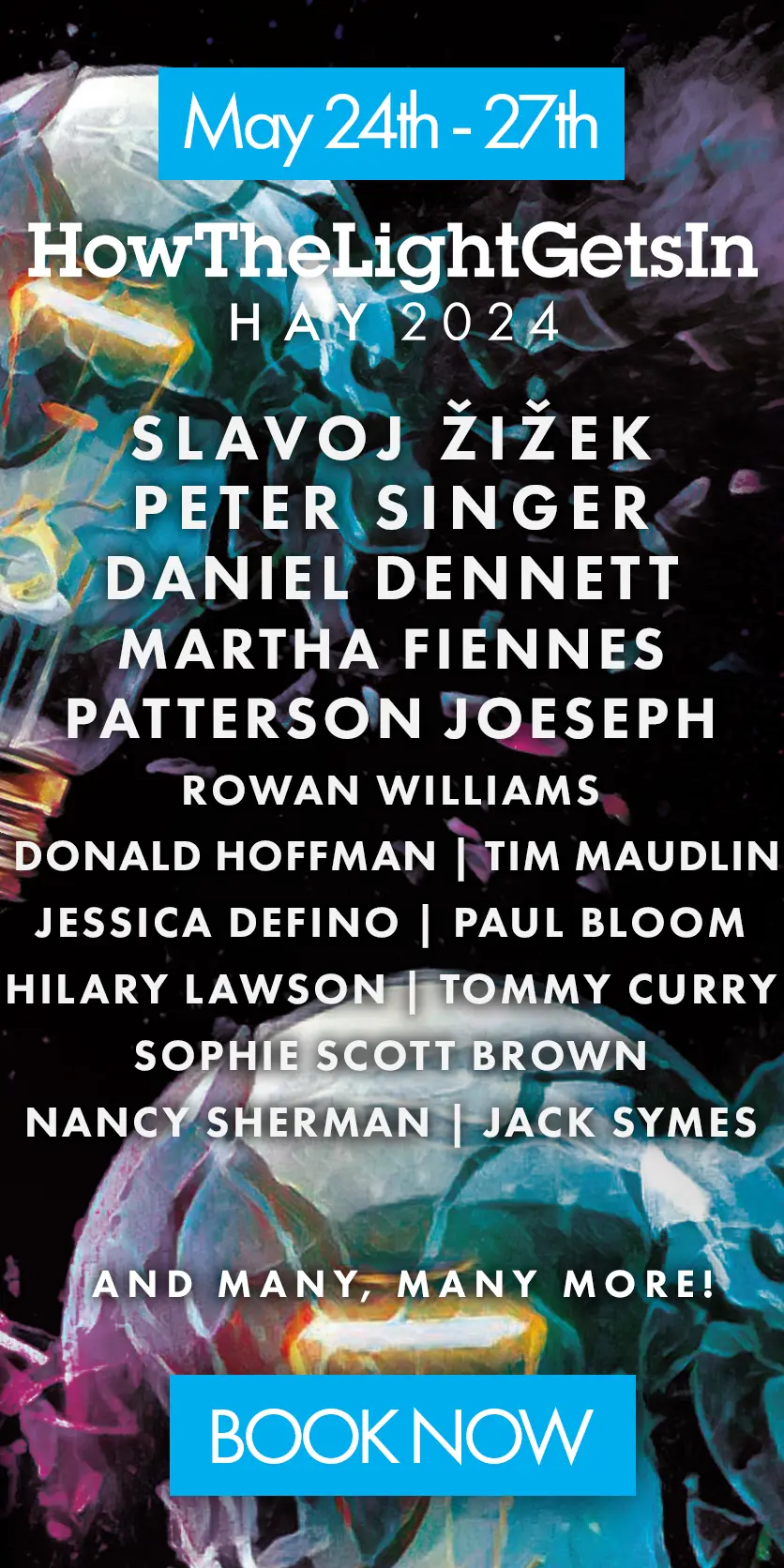Aesthetic experience is not like other things. From Kant to Schopenhauer philosophers have long since recognised that art, beauty and the sublime does not aid, in any obvious way, the evolutionary will to life. Aesthetic experience instead, is a happy-accident, which piggybacks on four other key survival-focused evolutionary events, writes William Hirstein.
Nature entices us to engage in activities that further our survival and genetic proliferation by making these activities rewarding. Reward is the way that evolution gets us to do what it ”wants.” Why do we like sex? We must reproduce. Why do we like to eat? We must nourish ourselves. Why do we like art? [Crickets chirping]. The fact that there is no obvious and sufficient answer to this question, and indeed, no suitable answer has been found since Darwin laid out the theory of evolution, indicates, I would argue, that our love for art is not a direct result of any particular need or function. Rather, it must be a byproduct of something else—some other trait that is actively selected for. Evolution can produce such byproducts when genes code for multiple traits, one of which is selected for, and the others go along for a free ride. They appear as an accidental consequence of the evolutionary processes behind the brain’s “design.” This is referred to as a byproduct, or “spandrel” view of art. According to these views, our love for art is somewhat accidental.
The appearance of these byproduct traits can be puzzling until we discover which trait they accompany that was or is being actively selected for. I’ll describe here a view according to which our love for art is a compound byproduct of four different evolutionary events in which another, non-artistic trait was selected for, but brought an artistic trait along with it.
We might start this inquiry by asking where in the brain aesthetic experience occurs, and examining what is known about that area. But we have not found a magic place that lights up when and only when people are having aesthetic experiences. Several different parts of the brain are active during aesthetic experiences. The participation of these different parts may well trace to different evolutionary events. Consistent with this, aesthetic experience is rewarding, but it contains not just one reward, but several, each occurring at different stages or parts of the aesthetic experience.
Aesthetic experience is rewarding, but it contains not just one reward, but several, each occurring at different stages or parts of the aesthetic experience.
First event: the advent of consciousness
Aesthetic experience lives in the conscious realm. While it often has non-conscious components that stew away unconsciously and bubble up into consciousness hours, days, or years later, aesthetic experience is primarily conscious.
At some point in our evolution the ability to form conscious states came into being. Perhaps the most important function that consciousness performs is that it unifies the incoming flow from all the sense modalities. Consciousness allows for large, unified data structures capable of including features generated by several brain networks, such as the different sensory modalities, but also emotion and our sense of reward. Consciousness also allows for more detailed, finer-grained representations which can then be used in the preparation and execution of more diverse, and hence more effective behavior—because it is better tailored to the specific situation.
The brain has several input systems (such as the five senses), and several output systems (bodily actions, the voice, the face, the eyes). But rather than attempting to hardwire the input systems to the output systems, a process that would be subject to a chaos of conflicts and contradictions between the separate systems, it would be much better to unify the input into a single world-representation, then let the output systems respond to different perturbations in the conscious field.
The aesthetic byproduct of this is that consciousness allows aesthetic experiences to involve large, holistic representations, or “gestalts.” The high resolution of conscious states allows for a vast variety of subtly different experiences, including perceptions accompanied by emotions and a sense of reward. Consciousness created a type of multimodal, emotion and reward-filled, detailed state that provides a good foundation for aesthetic experience.
Consciousness created a type of multimodal, emotion and reward-filled, detailed state that provides a good foundation for aesthetic experience.
Second event: The attention fix
Adding flexible attention to interact with the conscious field increases the power of a brain tremendously. Conscious attention can move quickly to any part of the conscious field and bring multiple brain resources to bear on that focal point. Attention needs to be able to range over a homogeneous field, and consciousness can do this. My visual field, my body, the sounds and smells around me, they all need to equally be candidates for attention.
So, with all this flexibility, where does attention choose to go? The great majority of the time, our attention goes toward items that we find rewarding to attend to. But this creates a huge problem. If attention is determined by reward (except for pain, which is hardwired to hijack attention), why would we ever attend to negative items? Attending to something negative is aversive to us, and produces negative emotions that can be lasting and lead to depression. A fix is needed.
The solution that the forces of nature arrived at was to make all significant, i.e., arousing, events, positive or negative, rewarding to attend to, and to continue attending to. Anything significant—anything that produced a strong enough emotion of any valence—became rewarding to attend to. Thus, some people experienced a reward when considering, representing, simulating, countenancing negative events. This caused them to be unable to turn away from such events and to ultimately spend more time considering these events. This in turn caused them to develop better plans of action for dealing with those events.
Attention to the negative and its rewards evolved because it produced a vastly more effective cognitive system. This might be more an engineering truism of evolution than a specific event in our evolution, but a truism that was behind many important evolutionary events. Yes, a creature can be manipulated by altering its rewards, but if you alter those rewards out of line with the basic requirements for survival, the line dies off. On our own scale as individuals, we do what is rewarded, and what is rewarded for the most part in consistent with what is good for us. But it can stray—the heroin addict finds reward in something that is bad for him.
On our own scale as individuals, we do what is rewarded, and what is rewarded for the most part in consistent with what is good for us.
Third event: The creation of the default mode network
The third event that produced art and aesthetic experience was the advent of a special type of representational state, in the default mode network (DMN), a large cortical system made up of several interconnected areas which has extensive connections to the reward systems in the striatum. The DMN produces detailed representations of things and people in contexts. These are a powerful type of large analog representation that can be used online or offline for several important purposes. Here are four types of representational states the DMN is responsible for:
Autobiographical recall: E.g., recalling your experiences yesterday.
Prospection: E.g., planning a vacation.
Hypothetical thinking: E.g., imagining how would it feel to be standing on top of Mt. Everest.
Mindreading: E.g., simulating the mental states of another person.
In general, the DMN is capable of producing large representations, or simulations of events, whether the events are real or merely imagined. I suspect that the DMN evolved initially as a sort of echo chamber of perception, capable of holding percepts as conscious representations after their objects have vanished, for increasingly long periods of time. That is what appears to be happening in the case of autobiographical memory.
As the ability of experimentalists to capture deep aesthetic experience in the laboratory improves, DMN activity is increasingly seen. These states are imbued with emotion/reward via the dopamine and serotonin systems. These rewards are signals that help us attach value to the events represented. Thus, these simulations are very helpful in decision making. The reason why possession of a default mode network was directly selected for is that it gave our ancestors the ability to mentally simulate all sorts of scenarios. These simulations produce emotions that tell us what they mean to us. As in the case of basic perception, even negative scenarios bring a reward to us for creating DMN representations of them.
The aesthetic byproduct that was indirectly selected for along with the DMN is a deeper, more personal aspect to aesthetic experience, along with the ability to discern the artist’s intentions (using the DMN in its mindreading or mentalizing mode) and integrate this knowledge into the aesthetic experience. Artworks depict a world for us to envisage and inhabit. In addition to the reward, the DMN is a cognitive safe space, where all sorts of frightening and negative, but arousing and significant, thoughts can be considered.
Artworks depict a world for us to envisage and inhabit.
Fourth event: The advent of novelty seeking/openness
There is a gene in the human genome that makes those who have it attracted to novel events and things. Initially it was thought that the presence of a certain repeating sequence in a gene for dopamine was correlated with novelty seeking. Recently, it appears that a gene for serotonin might actually be a better candidate. This novelty gene appears in a portion of the human population, something that may explain vast differences in our temperaments. People who love novelty are intrigued new things, instead of frightened or angered by them, as some people seem to be. I can think of three possible reasons for why this attraction to novelty was selected for:
1.Mating: Seeking novel mates would bode well for proliferating your DNA, and producing a diverse set of children.
2.Innovation: Inventors are people who are excited by novel ideas and things. And building novelty seeking into the larger population produces both inventors and an audience for inventors.
3.Diversifying preference: If you combine novelty seeking with other factors, such as imprinting, the result is a population with diverse preferences for mates and resources, which prevents everyone for going for the same potential mates and resources.
The worlds of art and design are massively fueled by the thirst for novelty. Novel creations and additions also carry their own aesthetic merit. Once the novelty gene was spread broadly enough, the seeking of novelty by artists and viewers/listeners would cause art as a cultural practice to explode.
To sum up in terms of the favored cake analogies: Artworks are not like a cheesecake, which is largely homogeneous, but rather, a good artwork is a scrumptious four-layer cake of reward, with each layer containing its delights. And why should we resist? Art is good for you.

















Join the conversation